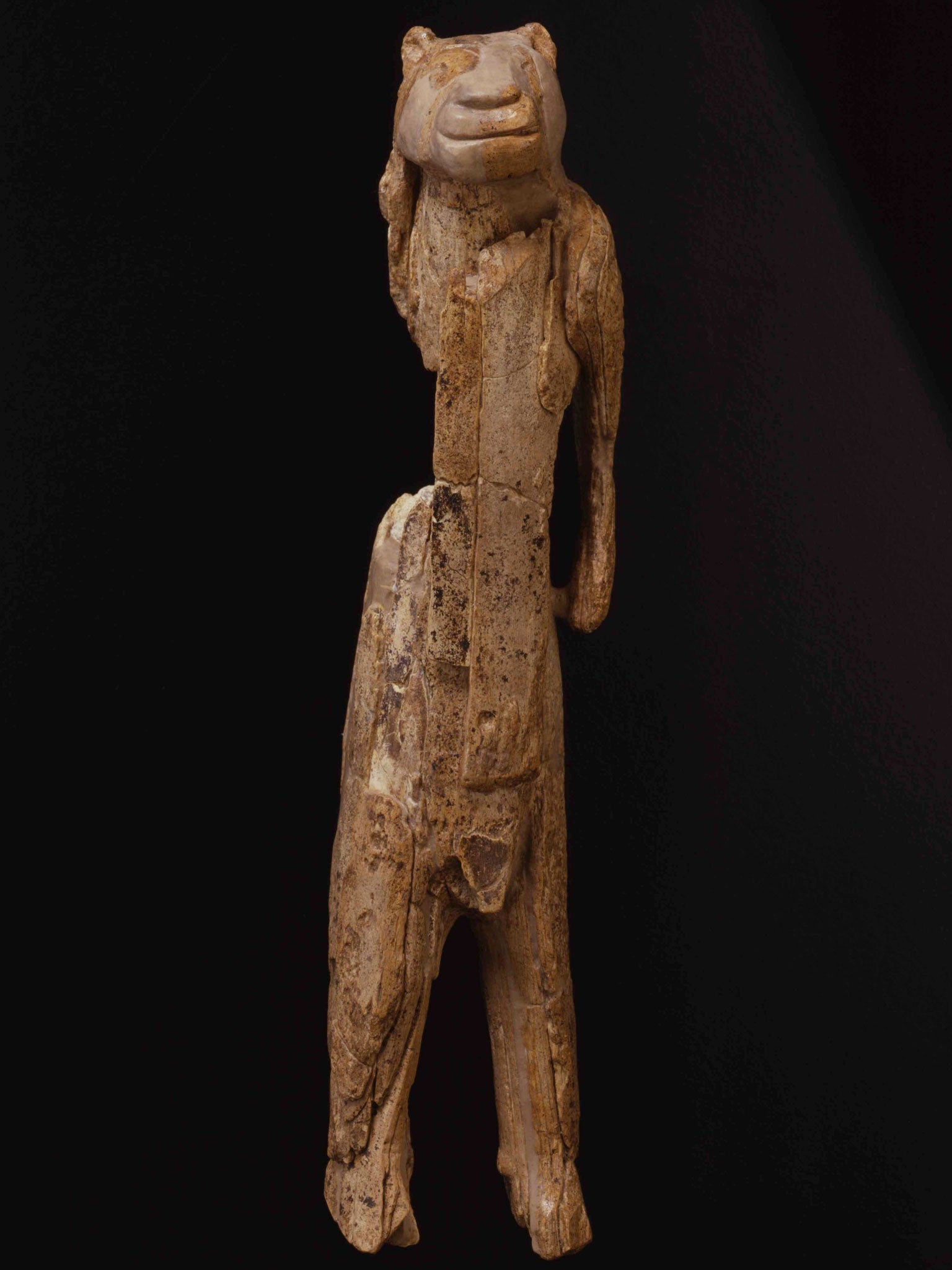Art review - Ice Age Art: Arrival of the Modern Mind - From the depths of the Ice Age, the Lion Man roars still

Don't forget your glasses at the British Museum's new exhibition: most of the pieces in Ice Age Art would fit on a reindeer rib. Whatever this work was for, it was not intended to be displayed in a museum.
Yet despite their midget dimensions, these artworks have the clout of a sledgehammer. Around 40,000 years ago, our oldest ancestors picked up pieces of flint and began incising images of their world: lions, bison, mammoths, horses, deer, fish, birds – and women, women, women: women as overblown as Lucian Freud's benefits supervisor, women with curvaceous thighs and sturdy legs, women who are no more than a sex triangle suggesting childbirth or voluptuous breasts on a stick.
"Art," said John Berger in words displayed at the entrance, "is like a foal that can walk straight away." Some of these works are rejects: it is mortifying that "the oldest known work of art from England", from the Robin Hood cave in Derbyshire, should be a clumsy sketch of a horse that someone later scribbled over. Many are fiendishly accomplished, not dashed off in spare moments between hunts. It took a modern German craftsman 400 hours to reproduce the marvellous smiling Lion Man. The original is currently under reconstruction following the discovery of more fragments. These pieces were valued highly.
And rightly so. An exquisite leaf-shaped flint-point only 6mm thick is a miracle of delicacy. The sculpted head of a musk ox, at 18cm high one of the chunkier pieces in the show, is a distillation of the beast's fearsome solidity. The Zaraysk Bison strides purposefully towards us, vividly alive. Scientists have long valued such works for the evidence they provide of the circumstances in which they were made: the drawing on bone of a mammoth, found at Mal'ta in Siberia, for example, proved that homo sapiens was already around when animals such as the mammoth were still extant.
But this exhibition seeks to encourage us to enjoy these artefacts purely as works of art – as the earliest surviving eruptions of the creative urge, speaking to us as directly as the works of Modernist artists displayed alongside them.It's a fascinating venture, and the way visitors at the press show were engrossed by these tiny objects suggests that success is assured. Yet it depends on a certain intellectual sleight of hand.
"All art is the product of the remarkable structure and organisation of the modern brain," writes curator Jill Cook; the show is subtitled Arrival of the Modern Mind. But the word "modern" means two entirely different things to biologists and to art historians. Here, those two meanings are subtly conflated, an effect encouraged by the juxtaposition of these ancient pieces with works by Picasso, Matisse and Moore.
But the familiarity is an illusion. We know the context of Modernism all too well. But what do we know of the context in which these women giving birth or lions giving chase were fashioned? Nothing at all, as Dr Cook admits in the catalogue's afterword: "We cannot read the thoughts transcribed in [these] extraordinary works ...." They certainly speak to us – but what on earth do they say?
To 26 May (020-7323 8299)
Join our commenting forum
Join thought-provoking conversations, follow other Independent readers and see their replies
Comments